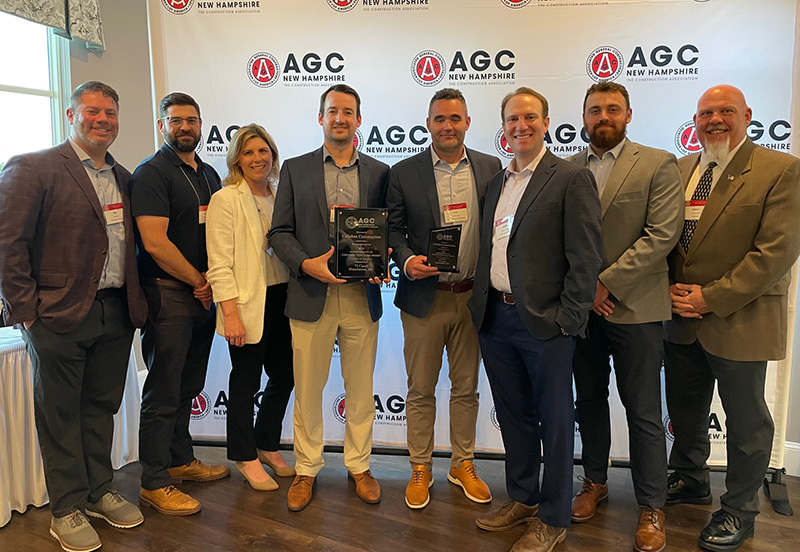News: Construction Design & Engineering
Posted: November 14, 2013
Three construction trends catching fire in the Massachusetts independent school market
There are close to 250 private, independent schools in the Commonwealth eager to attract new students. To stand out in a competitive market, these schools must find ways to differentiate themselves while providing outstanding academic, athletic, and arts programs in state-of-the-art facilities. In terms of construction on campus, there are three distinct trends that have emerged over the past year that promise to continue into the near future:
1 - Specialty classrooms - emergence of buildings like STEM (Science, Technology, Engineering, Math) and STEAM (Science, Technology, Engineering, Arts, Math) facilities
2 - Master Planning - creating a prioritized list of necessary upgrades/renovations/new construction and then phasing the work over a set amount of time
3 - Renovations over new construction - upgrading existing facilities in lieu of building new
Specialty Classrooms
At Erland, we've seen this trend take shape first hand. Recently, we have noticed an influx of proposals for specialty classrooms buildings - particularly those that contain science and math laboratories. And it's not just the secondary schools that are getting in on the action - primary and middle schools are also recognizing the importance of strengthening the math, science, technology, and arts curricula with leading edge facilities.
Erland recently completed the new science, math & library center at St. Sebastian's School in Needham - a great recent example of the specialty classroom boom. The new 32,000 s/f, two-story classroom facility - built as an addition to the existing main building -features eight math classrooms; two biology labs; and two science classrooms on the first floor. The second floor has two chemistry labs; two physics labs; a math/science computer room; a seminar room; and a reading room. In addition, the new building has a light-filled rotunda that is used for physics lessons. With this new space dedicated to math and science, St. Sebastian's is able to offer its students more advanced courses like robotics, engineering, calculus, and physics - exposing them to a richer educational experience and allowing them to delve deeper into their studies.
Master Planning
Creating a master plan for campus construction can be a challenging endeavor, but ultimately it's highly rewarding. Since schools rely primarily on fundraising and donations to pay for capital construction projects, master planning helps to communicate future plans to major donors as well as determining how much money is needed each year.
A great way to start is for the school to compile a team - including an architect and a construction manager - to perform a complete study of the campus and its existing facilities. This team will investigate each building, performing selective demolition as necessary to determine the structural integrity of each building. If possible, it's best to perform these potentially disruptive actions over the summer or another vacation period so classes are not negatively impacted. As a deliverable, the team will present the school with a prioritized list of recommended upgrades/renovations. The school can then determine how to phase these recommended upgrades - including hiring new teams to perform the actual construction if they so desire. If a building is deemed beyond repair or a new building is required to fulfill a need, the plans for those new spaces will also be worked into the master plan.
The Fay School has seen the benefits of a well thought out master plan first hand. Erland recently completed their two-phased plan, which included two new dormitories, a waste water treatment plant, a maintenance building, and a new ceremonial entrance in the first phase. The second phase included renovating the first floor of the existing Steward Dormitory into a new wellness center and building a new primary school for grades pre-K through second grade. Because they had a clear and prioritized plan for construction, Fay was able to fundraise for these campus improvements over the course of several years while providing their benefactors with a clear and concise plan for the future.
Renovations over New Construction
Particularly since the economy has been stagnating in recent years, many schools are looking to improve their current facilities and focus on deferred maintenance, rather than building new. Deciding to green light a construction project is an expensive and time-consuming undertaking and since schools rely on tuition, endowments, and aggressive fundraising to fund these construction projects, most are seeking the best value for their construction spending. Renovation projects are typically less costly than new construction and are often a better alternative for budget-conscious schools.
Over the past several years, we have seen an increase in the number of renovation projects versus new construction projects at independent schools. One of our long-time clients, Phillips Academy in Andover, has made the decision to renovate many of their buildings over the years - often opting for "summer slammers" to take advantage of occupying the space while students are on break. Erland has upgraded two dormitories and the hotel on campus, ensuring that Phillips Academy could earmark future money for other capital construction projects.
Staying Competitive and Budget Conscious
If these three trends can be summarized into one common theme, it's that more and more schools are looking to attain a competitive edge without breaking the bank. Of course, fiscal responsibility is not a new or uncommon goal for any institution, but the way schools are prioritizing the use of their funds these days is both more creative and focused than the past. Particularly with the rising popularity of master planning, schools are looking for the best and most affordable ways to improve their campus facilities to maximize their ability to attract and retain the best and brightest student body and faculty possible.
Rick Jensen is vice president/academic group manager at Erland Construction, Inc., Burlington, Mass.
MORE FROM Construction Design & Engineering
Nobis Group awards Robinson and Moreira STEM scholarships
Concord, NH Nobis Group, a 100% employee-owned consulting firm specializing in engineering and environmental solutions across the Northeast, has named the recipients of its 2025 STEM Scholarship: Andie Moreira of

Columns and Thought Leadership

The rise of incubators and co-working spaces: The latest in life sciences - by Matt Combs
In recent years, the life science industry has witnessed a shift in how companies operate and innovate. One of the key driving forces behind this transformation is the emergence of incubators and co-working spaces specifically tailored to meet the unique budget and schedule needs of startups.

The design-build advantage: Integrated interior design solutions - by Parker Snyder
When it comes to corporate interior spaces for both commercial and industrial projects, partnering with a design-build firm with in-house interior design services can offer clients many benefits. Unlike traditional delivery methods where interior designers operate independently from the design and construction teams, often creating a longer project timeline as cost negotiations and revisions ensue

Ask the Electrician: Is summer a prime time for commercial electrical maintenance?
The answer is “Yes!” While January marks the official new year, many businesses view September as a fresh start. This makes summer an ideal time for commercial property owners to schedule long-term electrical maintenance projects.

Careers in Construction Month focus on training and safety - by Joe Camilo
October is Careers in Construction Month, and rarely has it been more consequential. According to our chapter’s national parent organization, the construction industry needs to attract half-a-million new workers in the coming year to meet demand. Addressing that need is a huge job, but we at ABC MA are trying to do our part.







